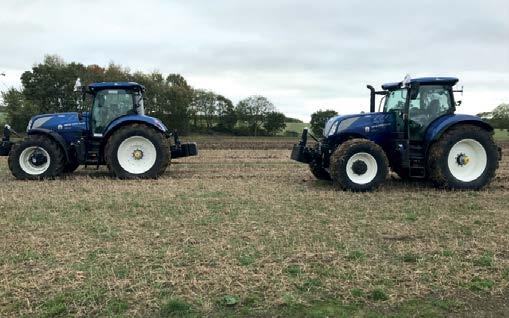PLAN THE MOVE TO DIRECT DRILLING CAREFULLY
Both cover crops and low-disturbance drilling are often seen as an easy way to improve soil health and performance while also offering an opportunity to cut fixed costs. Where the transition is managed well, it can be very worthwhile but in other cases, the journey to drilling nirvana can be a fraught with obstacles, explains Steve Corbett, trials manager for crop advisers and research specialists, Agrii. “The move to reduced cultivations or pure direct drilling is about first recognising where systems can change while preserving or improving financial returns,” he says. The first consideration, he believes, is to understand why the existing system is arranged as it is. “Systems are often soil dependant. There is a need to identify the characteristics of a seed drill that are important to the operation and the objectives set by the manager. Any pre-drilling activities should also be considered, be it straw raking or shallow cultivations. There are situations where moving the top centimetre or so of soil will be highly beneficial and others where it is not necessary,” Mr Corbett says. The development of new technology, especially the ability to apply inputs in a precise manner, and to incorporate more than one activity
Agrii trials manager Steve Corbett highlights the crop development benefits of a well-structured soil
38 DIRECT DRILLER MAGAZINE
The drill demo day at the Swindon AgriiFocus day in October investigated the different systems of six brands of seed drill
at a time, namely fertiliser placement and sowing of cover or companion crops, should also be considered. “There are many facets to the direct drill conundrum. Do you want to apply fertiliser at the same time, and will you be sowing more than one crop too? This is before we consider the diversity of crops in the rotation, time of drilling, be it early or late autumn, or on cultivated or non-cultivated ground. As precision technology comes to play an ever-greater role, growers may also want to consider the potential to integrate variable rate systems. This often needs to be considered before we think about coulter travel or lift and how effectively the various setups can handle surface trash,” Mr Corbett says. Soil type is often both the determining and limiting factor. It tells you what you have to work with
and will define the scope of your objectives. For example, will it easily take water, is it easy to create a tilth, how much air will be displaced if we were to receive a heavy rain shower? From here, we can see what is and is not feasible. “At the basic level, soil type and condition will influence the choice between a disc or tine drill. These considerations rarely receive the time they warrant. Whether the disc runs at a slight angle with the coulter in its shadow or the disc is straight, and the coulter forces the opening will depend on the soil type and its condition. Issues such as hair-pinning, where the straw is forced into the opening, or where the opening can’t be closed after the seed has been placed because of the high plasticity of the soil, are often consequences of inappropriate drill choice or poor setup,” he says. ISSUE 16 | JANUARY 2022























